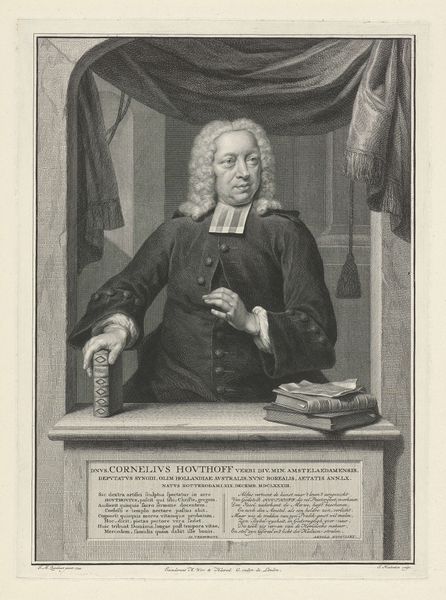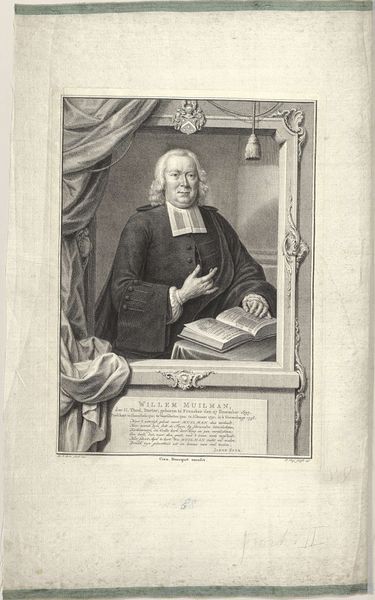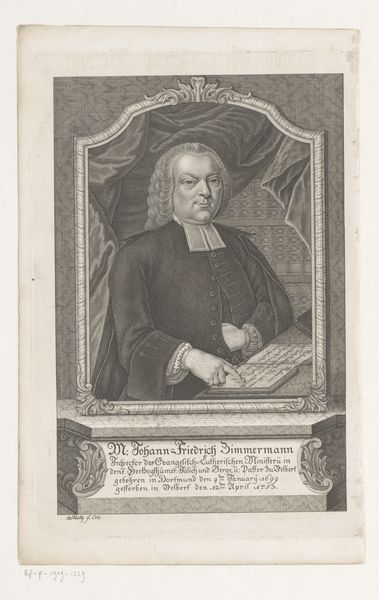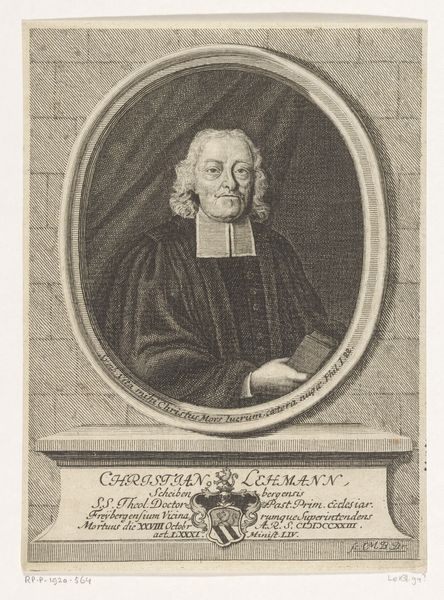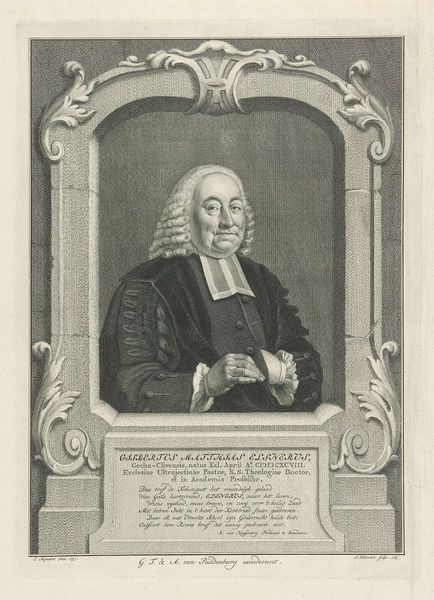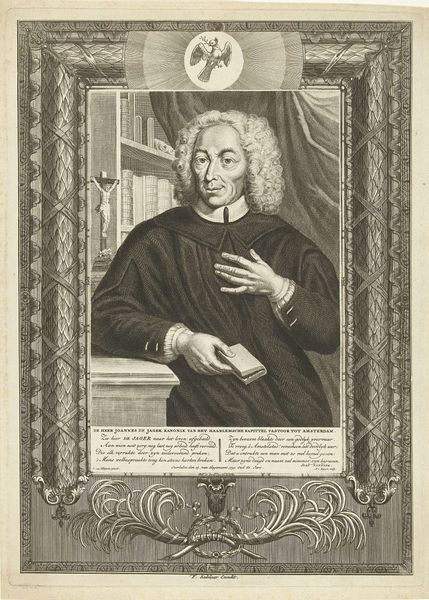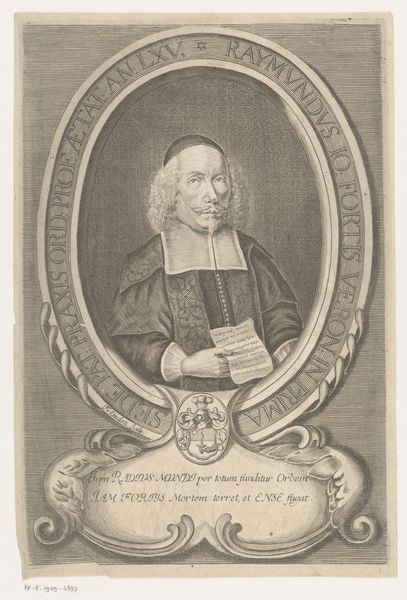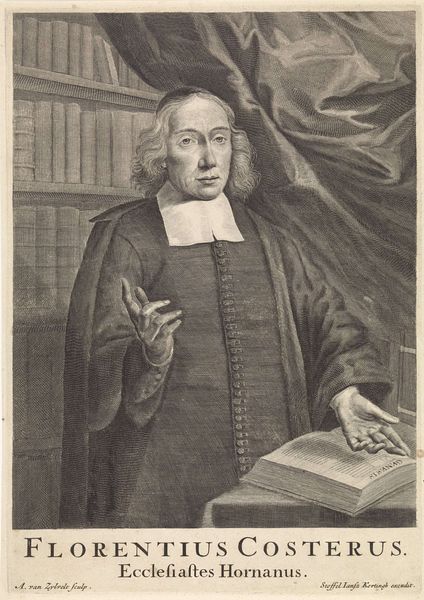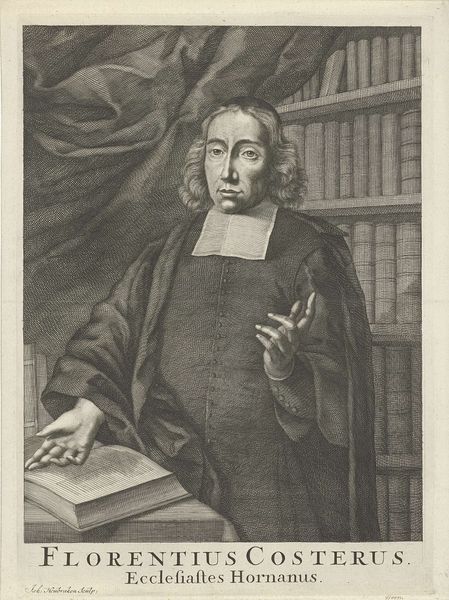
Dimensions: height 351 mm, width 257 mm
Copyright: Rijks Museum: Open Domain
Pieter Louw made this print of Henricus Hageman in the 1700s, using a technique called etching. Etching involves biting lines into a metal plate with acid, then inking and printing it, and it’s the key to appreciating this portrait. Look closely, and you can see the delicate network of lines that define Hageman’s face and clothes. The acid gives the lines a unique, slightly irregular quality. The printmaking process itself speaks to the social context of the time. Unlike painting, prints could be reproduced and distributed widely, making images accessible to a broader audience. This aligns with Hageman’s role as a preacher, disseminating his message to the masses. The very act of etching, with its reliance on skilled labor and mechanical reproduction, reflects the changing dynamics of art production in an increasingly commercial world. The beauty of this print isn't just in the image, but in the way the material and process contribute to its meaning. It blurs the line between fine art and craft, reminding us that all art is rooted in skillful making.
Comments
No comments
Be the first to comment and join the conversation on the ultimate creative platform.
